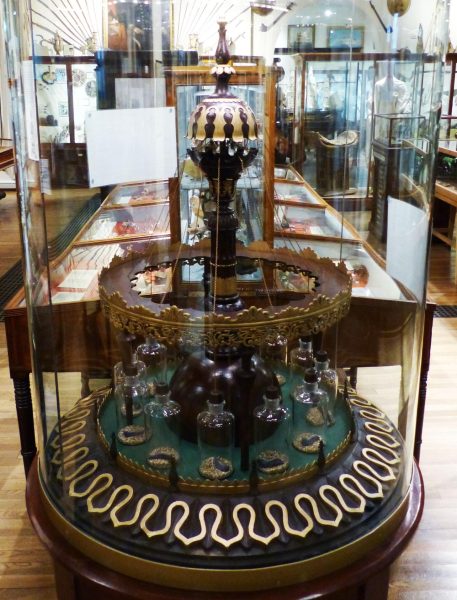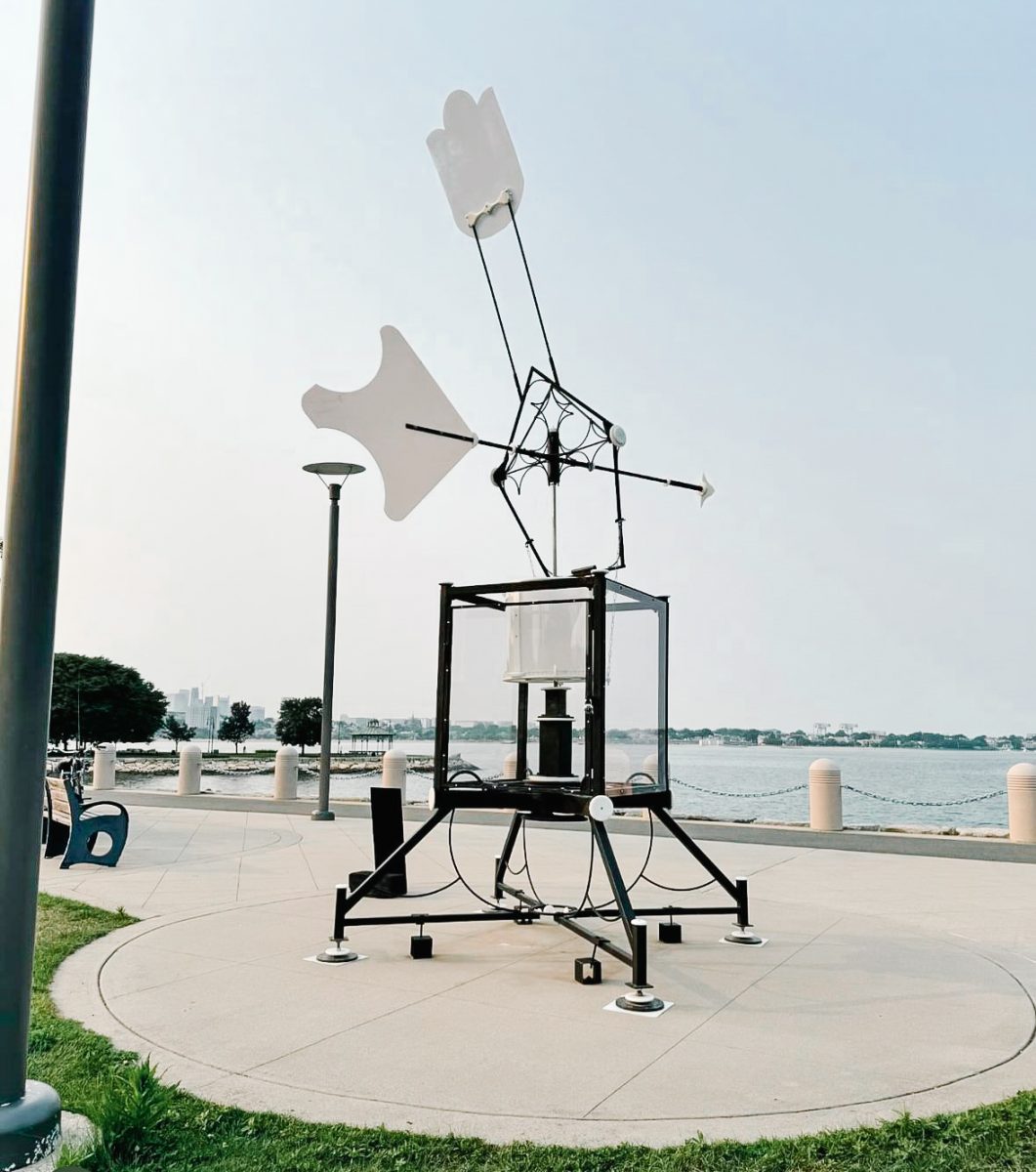The wind will always blow, but who will always take the time to listen? Andrew Mowbray’s Wind Driven Drawing Machine demonstrates just how much the wind can teach society.
Constructed along the Boston Harbor Walk between Old Harbor Park and the John F. Kennedy Presidential Library, the machine overlooks the waterfront, where it has become a place for people to convene and admire. Each week, it produces pen drawings that showcase the wind’s velocity and direction.
Mowbray, who is the Director of 3D Arts at Wellesley College, originally created the Wind Driven Drawing Machine between 2009 and 2010. The concept of the machine came from wanting “more of a direct connection with the weather,” one that would record the wind and weather and allow him to understand it in a unique way.
Situated between art and science, the machine can be seen as diving into the art world and abstract expressionism. To Mowbray, it serves as a medium between technology and nature.

“It’s a device. It’s a sort of a mediated relationship, but different than just looking at my phone,” he explained.
He added that, though he refers to his device as the Wind Driven Drawing Machine, the original drawing machine exhibit was called Tempest Prognosticator.
The title was derived from a Victorian device of the same name created by George Merriweather in the late 1880s, which contained leeches, metal tubes containing whalebone, and small hammers connected to bells. The chiming of many bells indicated the agitation of the leeches, and thus Merriweather would expect a large storm.
“I was interested in that kind of moment at the turn of the century, in the end of the 1800s where there were a lot of advances in science, medicine and industry,” Mowbray said. “In comparison to where we are right now with advances in science, technology and how that influences the way we experience natural phenomena like weather.”
Since 2010, he has made modifications depending on the site the device is displayed at, or improvements he wanted to make to the device itself. Two of these sites include Provincetown, where it was on display last summer, and now the Harbor Walk.
According to Mowbray, the device works similarly to a weather vane, where the needle points in whichever direction the wind is blowing from.
Attached to the needle is a drum lined with Mylar that floats up and down in the wind. Within the drum, there is a pen set at a fixed position pointing north. Depending on how the drum rotates and the height of the drawing on the page, Mowbray is able to identify the direction and strength of the wind.
Every Wednesday, he removes the drawing from the past week and puts in a new piece of Mylar for the upcoming week. Meanwhile, the pen inside the drum is changed every morning, with a different color signifying which day of the week it is. Wednesday is black, while Tuesday, the end of the week, is turquoise.
Drawings produced by the machine can be viewed at the University Hall Gallery as a part of the current exhibition “Nurture: Empathy for the Earth” on display through Dec. 14. This exhibition is presented under a larger academic conference that will occur in October called “Thinking about Climate Change: Art, Science, and Imagination in the 21st Century.”
“When I made the piece years ago, I was aware of potential climate change, but I feel like the impact of that is more visible now,” Mowbray said. “It’s right on our doorstep.”
The impact of climate change has been noticeable, especially at UMass Boston and the surrounding area. Morrissey Boulevard would flood occasionally over the past 15 years that Mowbray lived in the area. Now, he says, it floods monthly.
However, Mowbray doesn’t believe that this piece is specifically about climate change.
Instead, it represents observation and the need for it on a local level. Rather than simply relying on phones or the news, observing the everyday change in local places is important to recognize the extent of that change.
“We can’t control the weather, but I think by paying attention, we can hopefully make some sort of change, or at least embrace the fact that things are changing, and we can’t control them,” he said. “So, [it embraces] living in the moment a little bit.”
An open talk hosted by Andrew Mowbray and John Tyson, an Art History professor at UMass Boston, will be held at the machine Sept. 18 from 2:30 p.m. to 3:30 p.m. It is open to the public, and students can view the machine and discuss it with the artist himself.



